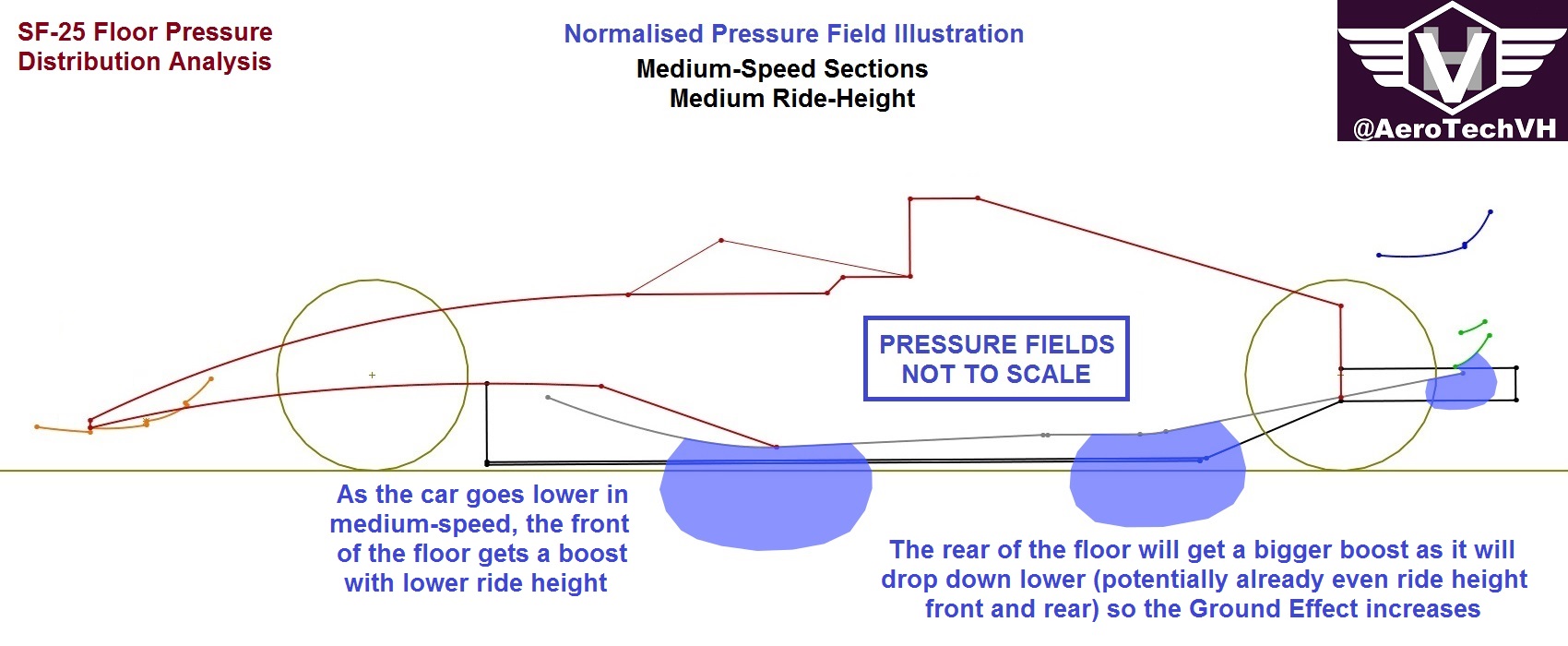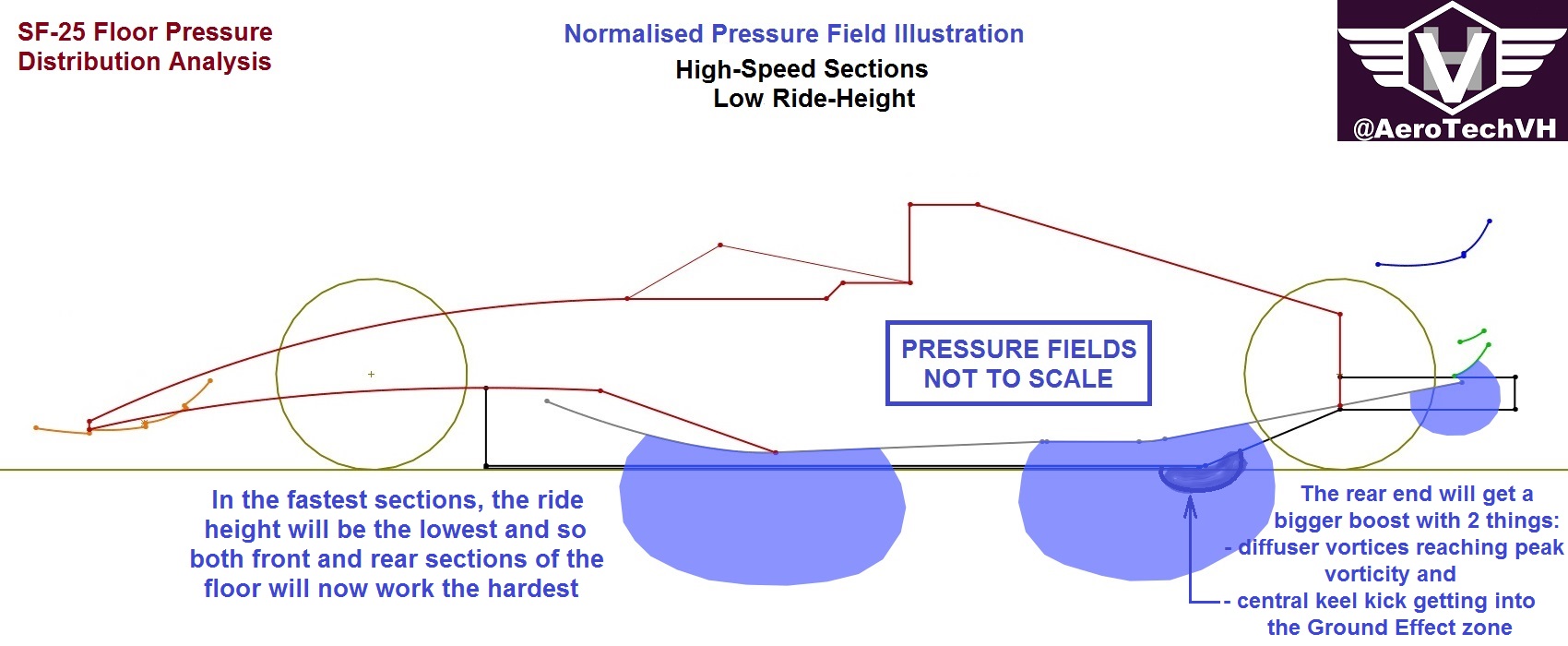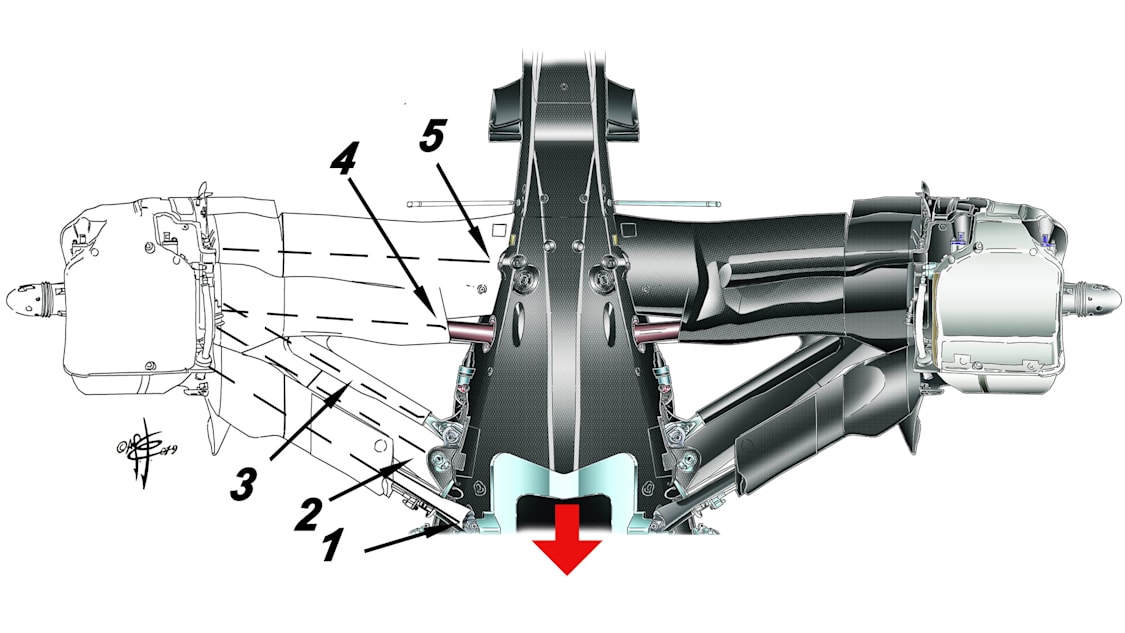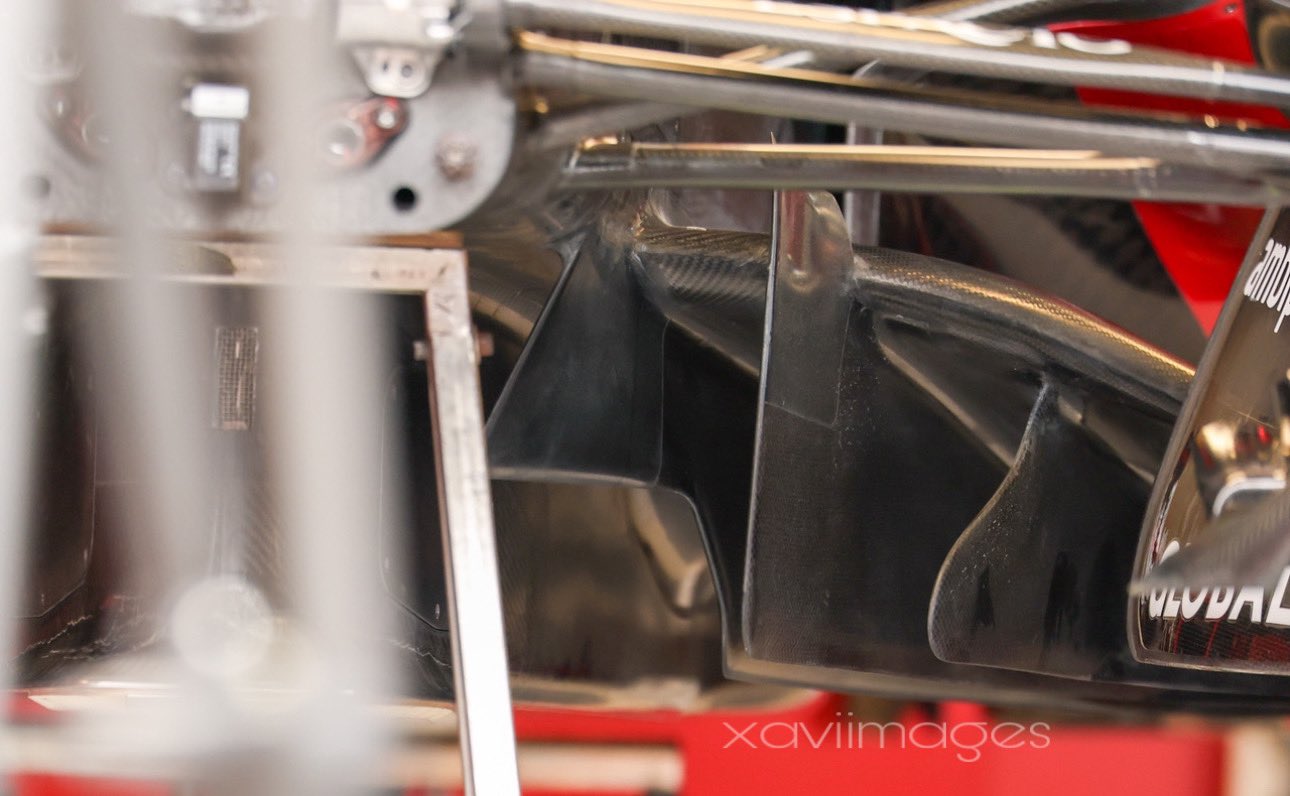
Low-speed Analysis
On many occasions in Bahrain test, we could see SF-25 having a small, but clear rake angle, indicating significantly higher rear end in static conditions. This allows the team to employ softer suspension in the first phase of spring compression, ensuring optimal traction levels getting out of low speed corners
This also means the diffuser kick on the floor will be quite high on SF-25, which means lower Ground Effect benefits and thus stronger front end. In low-speed, this may not be a huge aerodynamic loss as the softer rear end will make up aero-load grip with better mechanical grip - when everything is working perfectly.
Ferrari ran a relatively high F1-75 in 2022, while RB18 also had a small rake angle - most likely for these same benefits

Medium-speed Analysis
In these corners, the rear should start going down quicker than the front and this should start to balance out the floor performance overall. The trick in this corner speed range is finding optimal balance between mechanical traction (softer suspension) and stable rear aero load (stiffer suspension) to provide peak performance on corner exits

High-speed Analysis
With these cars, high-speed sections require extreme low ride heights and very stiff suspension in this final compression phase. This means all the rear traction on corner exits comes from aero load and in these speeds (say 220-230+ kmh) these loads are extremely high, so the floor balance needs to be shifted to the rear
In my view, Ferrari is achieving this despite relatively high diffuser kick with the help from central keel-kick (analysed in the original quoted post) now being very low to the ground and reaching peak efficiency. Additionally, diffuser vortices are getting stronger due to bigger pressure difference under the floor and this also boosts rear end performance
Ferrari tried using this combination of diffuser and keel kick on SF-24 and it worked until it didn't - with Barcelona upgrade package. These things are now getting very tricky to iron out and find the optimal balance, simply because these cars are reaching their performance ceiling and small gains seen in CFD and Wind Tunnels may not be seen on track and/or may be having a slightly different operating window due to unintended floor material flexure











